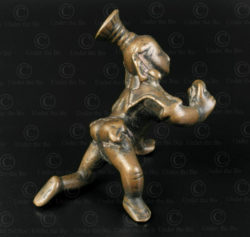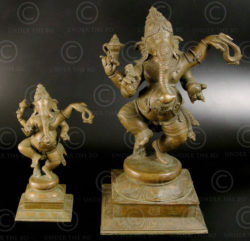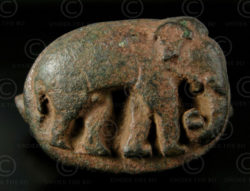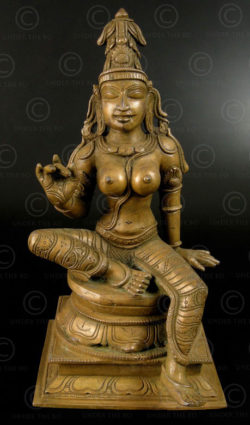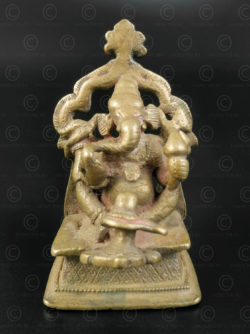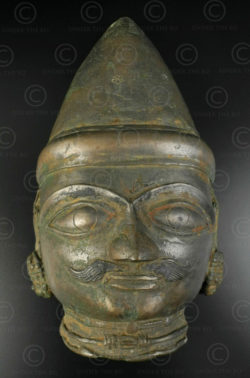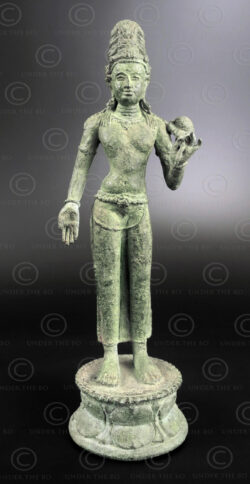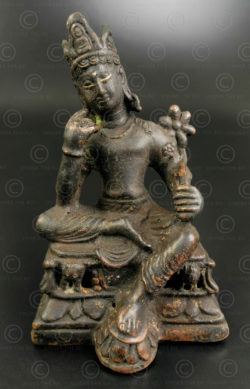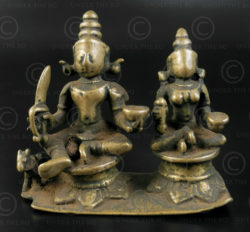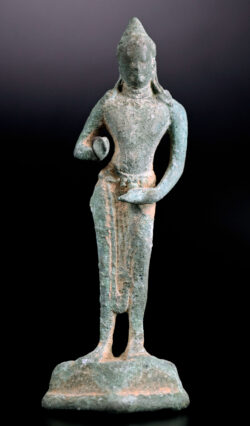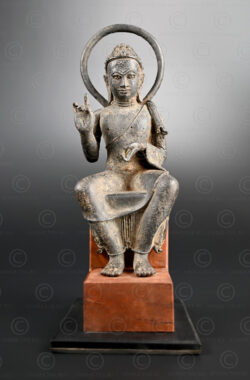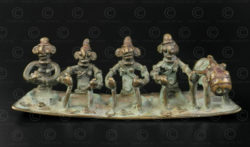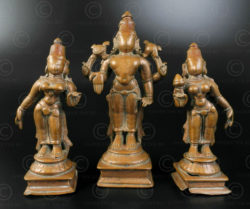Bronze, in the West, is typically a cast of 3 basic metals: Tin (12.5 to 14.6%), lead (1 to 3%) and the remaining percentage is copper. But in Asia, although these % are mostly respected, casters often melt discarded metallic objects which are not always made of proper bronze. Thus, as percentages vary, the appearance of the finished bronze statues vary too: their color can be silverish, yellowish or reddish depending on copper or other metals contained.
You will find here a series of very interesting articles about casting techniques and history of bronze arts in Asia written for the “Cast for Eternity” exhibition that took place at Antwerp Ethnographic Museum, Belgium, in April 2005 : by Marcel Nies (introduction), Jan Van Alphen on aspects of Indian sculpture, Ian Aslop about metal image-casting in Nepal, and David Weldon about Tibetan sculpture.
About Tibetan thogchags, we found these two articles by John Vincent Bellezza: The Ancient Amulets of Tibet and Metal and Stone Vestiges. And also this interesting blog.
CHANGE CURRENCY :
Showing all 88 results
-
Bala Krishna A196
$ 413 Add to cart -
Bronze Shiva mask 16P13A
$ 1,157 Add to cart -
Bronze Shiva mask 16P13B
$ 1,157 Add to cart -
Bronze Shiva mask 16P13C
$ 1,329 Add to cart -
Gandhara bronze Buddha PK245
$ 24,063 Add to cart -
Shivalingam cover 16P25
$ 1,125 Add to cart







